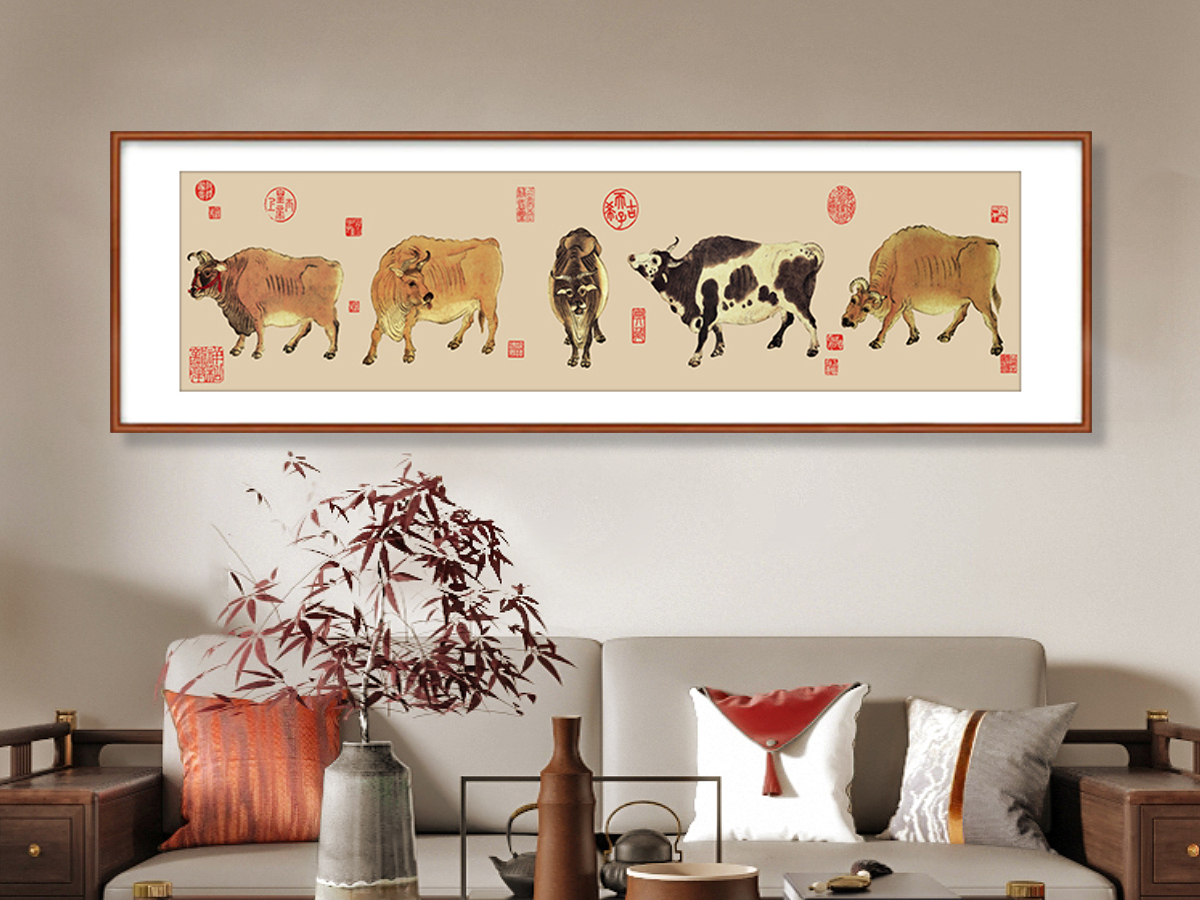I. The Timeless Original: A Glimpse into Artistic Greatness
The “Dwelling in the Fuchun Mountains” is an iconic paper ink-wash painting that emerged from the creative genius of Huang Gongwang in 1350 during the Yuan Dynasty. Revered as one of the top ten most celebrated and enduring masterpieces in the annals of Chinese art history, it holds a special place in the hearts of art connoisseurs worldwide.

This magnum opus unfolds a visual symphony of nature’s grandeur. The meticulously depicted forests and mountains blend harmoniously, with every contour and shade contributing to a sense of organic unity. Lush vegetation blankets the landscape, breathing life and vitality into the scene. It is not merely a representation of the physical world but a portal into a realm of spiritual serenity and reclusive idyll. The painting is suffused with the essence of a hermit’s life, one of unhurried exploration of secluded forests and gurgling springs. The overall mood is one of profound detachment and a refined, understated elegance that is quintessentially characteristic of the Jiangnan literati culture. It was this very painting that became the catalyst for a revolutionary shift in the aesthetic and stylistic paradigms of Yuan Dynasty paintings and, by extension, a significant milestone in the evolution of Chinese landscape painting. The emotional depth and lyrical quality that define Yuan paintings find their zenith in this scroll, making it a touchstone for understanding the artistic sensibilities of that era.
II. The Cross Stitch Rendition: A New Medium, Enduring Appeal
The cross stitch adaptation of “Dwelling in the Fuchun Mountains” has captured the imagination and admiration of many. In Western cultures, the concept of art as a means of enhancing the living environment and reflecting personal taste is highly valued. The cross stitch version offers a unique opportunity for individuals to engage with this ancient masterpiece in a hands-on and tangible way.
In the context of feng shui, a cultural belief system that has also found some resonance in Western interest in Eastern philosophies, the elements within the painting take on symbolic significance. The majestic mountains are seen as a metaphorical representation of wealth and stability, akin to a reliable and bountiful source of support. The gathering of waters into pools is interpreted as a harbinger of limitless prosperity and good fortune. It is this fusion of artistic beauty and cultural symbolism that has made the “Dwelling in the Fuchun Mountains” cross stitch a sought-after addition to many homes, especially among those who strive for success and abundance. Displaying it in the living hall is not only a statement of aesthetic preference but also a manifestation of one’s aspirations for a prosperous and fulfilling life. It has thus become a favored adornment among the accomplished and affluent, a testament to its ability to bridge cultural gaps and resonate with universal desires for beauty, prosperity, and a connection to a rich artistic heritage.









Leave a Reply